
Two VIMS scientists currently engaged in shark-related studies are PhD graduate students Dan Crear and Gail Schwieterman.


Two VIMS scientists currently engaged in shark-related studies are PhD graduate students Dan Crear and Gail Schwieterman.
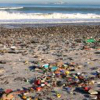
A VIMS team is challenged by the bewildering array of plastics and plastic additives in use in homes and businesses around the world—and now dispersed via trash and microplastic debris into seemingly every ecosystem on Earth, from the depths of the Marianas Trench to the polar ice caps.
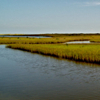
VIMS researchers are combining the immune system’s power with cutting-edge electronics to address pressing issues in marine science.

Collaborative research at VIMS aims to use wild algae to convert what is now a troublesome pollutant into a fuel that can help power our cars.
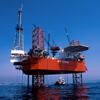
VIMS researchers answer some frequently asked questions concerning the Gulf oil spill.
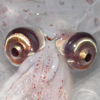
VIMS researchers are involved in the Census of Marine Life--a 10-year global project to collect, identify, and catalog each and every ocean species.
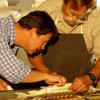
VIMS research plays a critical role in efforts to restore this ancient species to Chesapeake Bay and its tributaries.

Two VIMS scientists currently engaged in shark-related studies are PhD graduate students Dan Crear and Gail Schwieterman.

A VIMS team is challenged by the bewildering array of plastics and plastic additives in use in homes and businesses around the world—and now dispersed via trash and microplastic debris into seemingly every ecosystem on Earth, from the depths of the Marianas Trench to the polar ice caps.

VIMS researchers are combining the immune system’s power with cutting-edge electronics to address pressing issues in marine science.

Collaborative research at VIMS aims to use wild algae to convert what is now a troublesome pollutant into a fuel that can help power our cars.

VIMS researchers answer some frequently asked questions concerning the Gulf oil spill.

VIMS researchers are involved in the Census of Marine Life--a 10-year global project to collect, identify, and catalog each and every ocean species.

VIMS research plays a critical role in efforts to restore this ancient species to Chesapeake Bay and its tributaries.
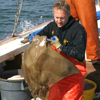
Sea Grant scientist at VIMS works to keep rays out of commercial shellfish beds while ensuring the sustainability of their population in Chesapeake Bay.
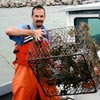
Dave Stanhope and Kory Angstadt are searching for a killer lurking on the floor of Chesapeake Bay. The culprit turns out to be derelict blue crab pots.

Sea Grant scientist at VIMS works to keep rays out of commercial shellfish beds while ensuring the sustainability of their population in Chesapeake Bay.

Two VIMS scientists currently engaged in shark-related studies are PhD graduate students Dan Crear and Gail Schwieterman.

A VIMS team is challenged by the bewildering array of plastics and plastic additives in use in homes and businesses around the world—and now dispersed via trash and microplastic debris into seemingly every ecosystem on Earth, from the depths of the Marianas Trench to the polar ice caps.

VIMS researchers are combining the immune system’s power with cutting-edge electronics to address pressing issues in marine science.

Collaborative research at VIMS aims to use wild algae to convert what is now a troublesome pollutant into a fuel that can help power our cars.

VIMS researchers answer some frequently asked questions concerning the Gulf oil spill.

VIMS researchers are involved in the Census of Marine Life--a 10-year global project to collect, identify, and catalog each and every ocean species.

VIMS research plays a critical role in efforts to restore this ancient species to Chesapeake Bay and its tributaries.

Sea Grant scientist at VIMS works to keep rays out of commercial shellfish beds while ensuring the sustainability of their population in Chesapeake Bay.

Dave Stanhope and Kory Angstadt are searching for a killer lurking on the floor of Chesapeake Bay. The culprit turns out to be derelict blue crab pots.

Dave Stanhope and Kory Angstadt are searching for a killer lurking on the floor of Chesapeake Bay. The culprit turns out to be derelict blue crab pots.

Two VIMS scientists currently engaged in shark-related studies are PhD graduate students Dan Crear and Gail Schwieterman.

A VIMS team is challenged by the bewildering array of plastics and plastic additives in use in homes and businesses around the world—and now dispersed via trash and microplastic debris into seemingly every ecosystem on Earth, from the depths of the Marianas Trench to the polar ice caps.

VIMS researchers are combining the immune system’s power with cutting-edge electronics to address pressing issues in marine science.

Collaborative research at VIMS aims to use wild algae to convert what is now a troublesome pollutant into a fuel that can help power our cars.

VIMS researchers answer some frequently asked questions concerning the Gulf oil spill.

VIMS researchers are involved in the Census of Marine Life--a 10-year global project to collect, identify, and catalog each and every ocean species.

VIMS research plays a critical role in efforts to restore this ancient species to Chesapeake Bay and its tributaries.

Sea Grant scientist at VIMS works to keep rays out of commercial shellfish beds while ensuring the sustainability of their population in Chesapeake Bay.

Dave Stanhope and Kory Angstadt are searching for a killer lurking on the floor of Chesapeake Bay. The culprit turns out to be derelict blue crab pots.
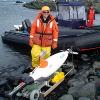
Dr. Mark Patterson’s autonomous underwater vehicle has conducted research missions from Chesapeake Bay to the Gulf of Mexico and Antarctica.

Two VIMS scientists currently engaged in shark-related studies are PhD graduate students Dan Crear and Gail Schwieterman.

A VIMS team is challenged by the bewildering array of plastics and plastic additives in use in homes and businesses around the world—and now dispersed via trash and microplastic debris into seemingly every ecosystem on Earth, from the depths of the Marianas Trench to the polar ice caps.

VIMS researchers are combining the immune system’s power with cutting-edge electronics to address pressing issues in marine science.

Collaborative research at VIMS aims to use wild algae to convert what is now a troublesome pollutant into a fuel that can help power our cars.

VIMS researchers answer some frequently asked questions concerning the Gulf oil spill.

VIMS researchers are involved in the Census of Marine Life--a 10-year global project to collect, identify, and catalog each and every ocean species.

VIMS research plays a critical role in efforts to restore this ancient species to Chesapeake Bay and its tributaries.

Sea Grant scientist at VIMS works to keep rays out of commercial shellfish beds while ensuring the sustainability of their population in Chesapeake Bay.

Dave Stanhope and Kory Angstadt are searching for a killer lurking on the floor of Chesapeake Bay. The culprit turns out to be derelict blue crab pots.
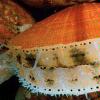
The recovery and growth of the East Coast scallop fishery is due to a long-term collaboration between scallopers, fishery managers, and scientists at VIMS.

Two VIMS scientists currently engaged in shark-related studies are PhD graduate students Dan Crear and Gail Schwieterman.

A VIMS team is challenged by the bewildering array of plastics and plastic additives in use in homes and businesses around the world—and now dispersed via trash and microplastic debris into seemingly every ecosystem on Earth, from the depths of the Marianas Trench to the polar ice caps.

VIMS researchers are combining the immune system’s power with cutting-edge electronics to address pressing issues in marine science.

Collaborative research at VIMS aims to use wild algae to convert what is now a troublesome pollutant into a fuel that can help power our cars.

VIMS researchers answer some frequently asked questions concerning the Gulf oil spill.

VIMS researchers are involved in the Census of Marine Life--a 10-year global project to collect, identify, and catalog each and every ocean species.

VIMS research plays a critical role in efforts to restore this ancient species to Chesapeake Bay and its tributaries.

Sea Grant scientist at VIMS works to keep rays out of commercial shellfish beds while ensuring the sustainability of their population in Chesapeake Bay.

Dave Stanhope and Kory Angstadt are searching for a killer lurking on the floor of Chesapeake Bay. The culprit turns out to be derelict blue crab pots.
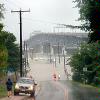
The potentially devastating impact of hurricanes and nor’easters to coastal residents motivates VIMS researchers to deliver timely and detailed predictions of storm tides, right down to street-level.

Two VIMS scientists currently engaged in shark-related studies are PhD graduate students Dan Crear and Gail Schwieterman.

A VIMS team is challenged by the bewildering array of plastics and plastic additives in use in homes and businesses around the world—and now dispersed via trash and microplastic debris into seemingly every ecosystem on Earth, from the depths of the Marianas Trench to the polar ice caps.

VIMS researchers are combining the immune system’s power with cutting-edge electronics to address pressing issues in marine science.

Collaborative research at VIMS aims to use wild algae to convert what is now a troublesome pollutant into a fuel that can help power our cars.

VIMS researchers answer some frequently asked questions concerning the Gulf oil spill.

VIMS researchers are involved in the Census of Marine Life--a 10-year global project to collect, identify, and catalog each and every ocean species.

VIMS research plays a critical role in efforts to restore this ancient species to Chesapeake Bay and its tributaries.

Sea Grant scientist at VIMS works to keep rays out of commercial shellfish beds while ensuring the sustainability of their population in Chesapeake Bay.

Dave Stanhope and Kory Angstadt are searching for a killer lurking on the floor of Chesapeake Bay. The culprit turns out to be derelict blue crab pots.
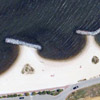
A long-term partnership between York County and VIMS has helped the historic riverfront community of Yorktown stem shoreline erosion, weather several powerful storms, and maintain a popular swimming beach.

Two VIMS scientists currently engaged in shark-related studies are PhD graduate students Dan Crear and Gail Schwieterman.

A VIMS team is challenged by the bewildering array of plastics and plastic additives in use in homes and businesses around the world—and now dispersed via trash and microplastic debris into seemingly every ecosystem on Earth, from the depths of the Marianas Trench to the polar ice caps.

VIMS researchers are combining the immune system’s power with cutting-edge electronics to address pressing issues in marine science.

Collaborative research at VIMS aims to use wild algae to convert what is now a troublesome pollutant into a fuel that can help power our cars.

VIMS researchers answer some frequently asked questions concerning the Gulf oil spill.

VIMS researchers are involved in the Census of Marine Life--a 10-year global project to collect, identify, and catalog each and every ocean species.

VIMS research plays a critical role in efforts to restore this ancient species to Chesapeake Bay and its tributaries.

Sea Grant scientist at VIMS works to keep rays out of commercial shellfish beds while ensuring the sustainability of their population in Chesapeake Bay.

Dave Stanhope and Kory Angstadt are searching for a killer lurking on the floor of Chesapeake Bay. The culprit turns out to be derelict blue crab pots.
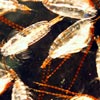
Each evening, a multitude of small sea creatures rises from the inky depths to feast on microscopic plants growing in sunlit surface waters. At dawn, they reverse course, descending to spend another day under the cover of darkness.By almost any measure, this daily migration rivals the great seasonal movements of caribou or arctic terns. Yet its magnitude was virtually unknown until the 1940s, and many of its mysteries remain.

Two VIMS scientists currently engaged in shark-related studies are PhD graduate students Dan Crear and Gail Schwieterman.

A VIMS team is challenged by the bewildering array of plastics and plastic additives in use in homes and businesses around the world—and now dispersed via trash and microplastic debris into seemingly every ecosystem on Earth, from the depths of the Marianas Trench to the polar ice caps.

VIMS researchers are combining the immune system’s power with cutting-edge electronics to address pressing issues in marine science.

Collaborative research at VIMS aims to use wild algae to convert what is now a troublesome pollutant into a fuel that can help power our cars.

VIMS researchers answer some frequently asked questions concerning the Gulf oil spill.

VIMS researchers are involved in the Census of Marine Life--a 10-year global project to collect, identify, and catalog each and every ocean species.

VIMS research plays a critical role in efforts to restore this ancient species to Chesapeake Bay and its tributaries.

Sea Grant scientist at VIMS works to keep rays out of commercial shellfish beds while ensuring the sustainability of their population in Chesapeake Bay.

Dave Stanhope and Kory Angstadt are searching for a killer lurking on the floor of Chesapeake Bay. The culprit turns out to be derelict blue crab pots.
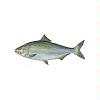
VIMS professor John Olney has worked for more than a decade to help restore American shad to Chesapeake Bay. These fish, once as iconic to the Bay as blue crabs or oysters, are now only familiar to scientists, commercial netters, and fly fishermen.

Two VIMS scientists currently engaged in shark-related studies are PhD graduate students Dan Crear and Gail Schwieterman.

A VIMS team is challenged by the bewildering array of plastics and plastic additives in use in homes and businesses around the world—and now dispersed via trash and microplastic debris into seemingly every ecosystem on Earth, from the depths of the Marianas Trench to the polar ice caps.

VIMS researchers are combining the immune system’s power with cutting-edge electronics to address pressing issues in marine science.

Collaborative research at VIMS aims to use wild algae to convert what is now a troublesome pollutant into a fuel that can help power our cars.

VIMS researchers answer some frequently asked questions concerning the Gulf oil spill.

VIMS researchers are involved in the Census of Marine Life--a 10-year global project to collect, identify, and catalog each and every ocean species.

VIMS research plays a critical role in efforts to restore this ancient species to Chesapeake Bay and its tributaries.

Sea Grant scientist at VIMS works to keep rays out of commercial shellfish beds while ensuring the sustainability of their population in Chesapeake Bay.

Dave Stanhope and Kory Angstadt are searching for a killer lurking on the floor of Chesapeake Bay. The culprit turns out to be derelict blue crab pots.
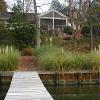
Living shorelines use strategic placement of plants, stone, and sand to reduce erosion, enhance wetland habitat, and provide important ecosystem services.

Two VIMS scientists currently engaged in shark-related studies are PhD graduate students Dan Crear and Gail Schwieterman.

A VIMS team is challenged by the bewildering array of plastics and plastic additives in use in homes and businesses around the world—and now dispersed via trash and microplastic debris into seemingly every ecosystem on Earth, from the depths of the Marianas Trench to the polar ice caps.

VIMS researchers are combining the immune system’s power with cutting-edge electronics to address pressing issues in marine science.

Collaborative research at VIMS aims to use wild algae to convert what is now a troublesome pollutant into a fuel that can help power our cars.

VIMS researchers answer some frequently asked questions concerning the Gulf oil spill.

VIMS researchers are involved in the Census of Marine Life--a 10-year global project to collect, identify, and catalog each and every ocean species.

VIMS research plays a critical role in efforts to restore this ancient species to Chesapeake Bay and its tributaries.

Sea Grant scientist at VIMS works to keep rays out of commercial shellfish beds while ensuring the sustainability of their population in Chesapeake Bay.

Dave Stanhope and Kory Angstadt are searching for a killer lurking on the floor of Chesapeake Bay. The culprit turns out to be derelict blue crab pots.
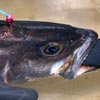
VIMS graduate student Andrij Horodysky is using electroretinography—a technique first developed for studying human vision—to explore how fishes see the underwater world of Chesapeake Bay.

Two VIMS scientists currently engaged in shark-related studies are PhD graduate students Dan Crear and Gail Schwieterman.

A VIMS team is challenged by the bewildering array of plastics and plastic additives in use in homes and businesses around the world—and now dispersed via trash and microplastic debris into seemingly every ecosystem on Earth, from the depths of the Marianas Trench to the polar ice caps.

VIMS researchers are combining the immune system’s power with cutting-edge electronics to address pressing issues in marine science.

Collaborative research at VIMS aims to use wild algae to convert what is now a troublesome pollutant into a fuel that can help power our cars.

VIMS researchers answer some frequently asked questions concerning the Gulf oil spill.

VIMS researchers are involved in the Census of Marine Life--a 10-year global project to collect, identify, and catalog each and every ocean species.

VIMS research plays a critical role in efforts to restore this ancient species to Chesapeake Bay and its tributaries.

Sea Grant scientist at VIMS works to keep rays out of commercial shellfish beds while ensuring the sustainability of their population in Chesapeake Bay.

Dave Stanhope and Kory Angstadt are searching for a killer lurking on the floor of Chesapeake Bay. The culprit turns out to be derelict blue crab pots.
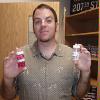
It may be mud and muck to you, but to David Gillett it’s like a super-sleuth game to see who’s eating whom and how energy moves through food webs.